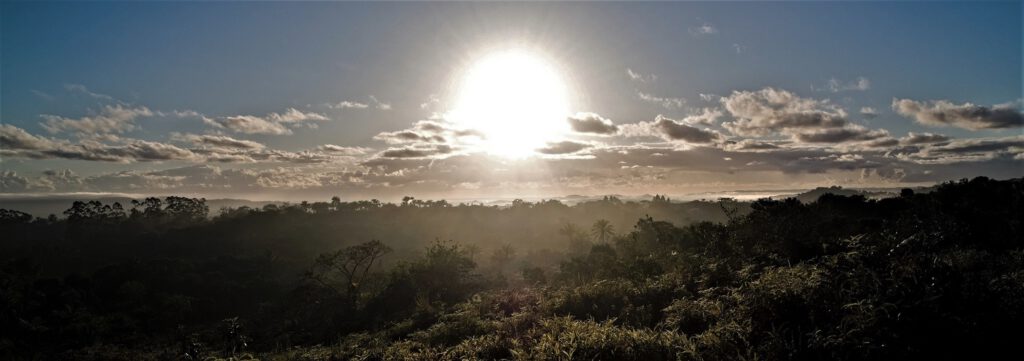
The Tropical Rainforest is a type of forest that is found in five main regions on Earth with similar climates. These regions, called climate zones, stretch in wide strips from east to west across the entire planet:
- The Polar zone and the Subpolar zone are located in the high latitudes and are known for their cold climates.
- The temperate zone is located between the polar zones and the subtropics. Germany is situated in this zone. It experiences a temperate climate with mild to warm temperatures.
- The subtropics are located between the temperate zones and the tropics. In these regions, temperatures are generally high, but not as extreme as in the tropics.
- The tropics are located on both sides of the equator. They have a sunny, hot and humid climate with high rainfall, averaging more than 2,000 mm per year. In comparison, the average precipitation in Germany in the year 2022 was 669 mm.
In the tropics, a region with permanently moist and warm climate, you can find the most significant rainforests on Earth – the Tropical Rainforests. These forests are characterized by their evergreen nature and high biomass. They consist of dense leafy areas that range from the forest floor to the tree canopies, forming a complex „layered“ structure known as „canopy stratification.“
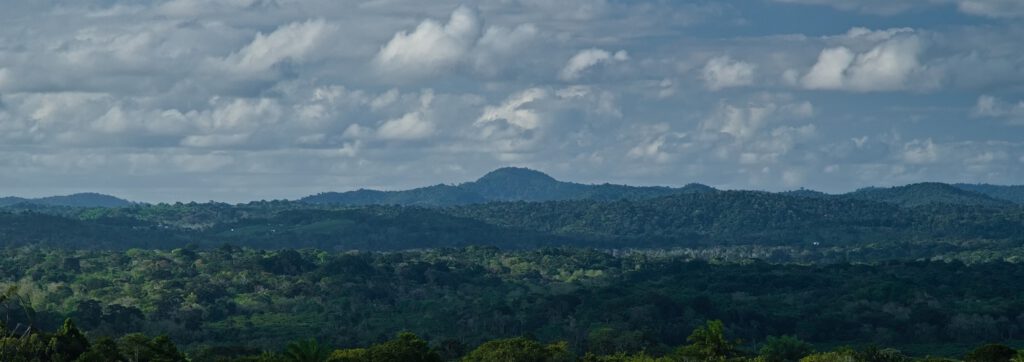
Tropical Rainforest (Mata Atlantica / State of Bahia, Brazil) (AR 09/2023)
In the Tropical Rainforests, there are different layers, starting with the topmost layer where scattered, very tall trees grow, reaching up to 60 meters in height. The tree canopies in this layer allow plenty of sunlight to pass through and provide a habitat for numerous epiphytes, which are plants that grow on other plants.
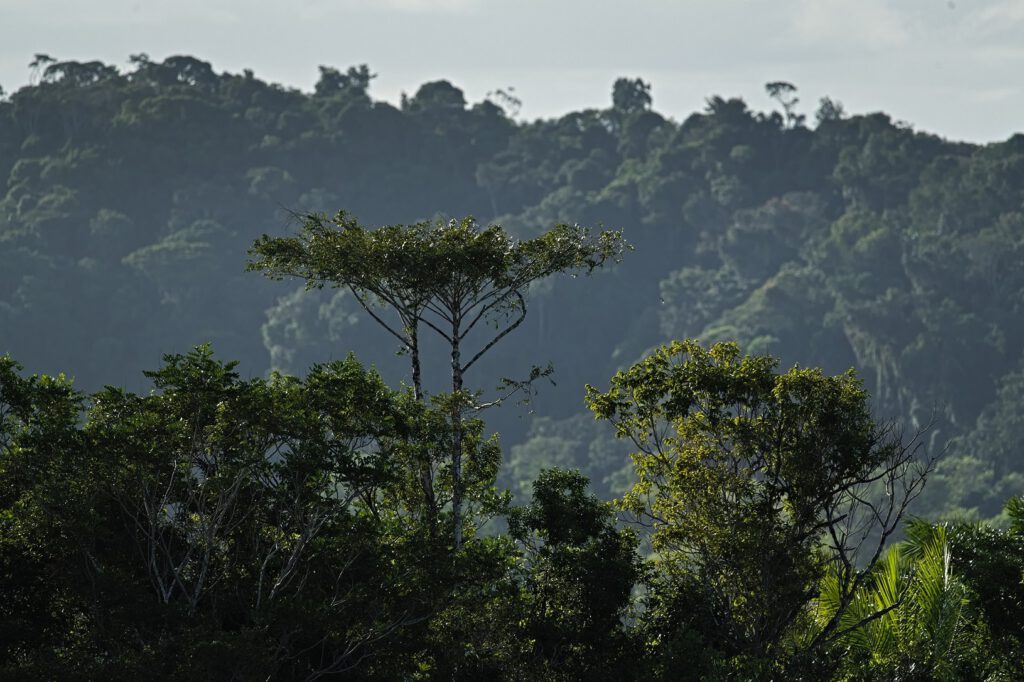
The most significant primeval forests on Earth are located in the tropics – the tropical rainforests. They are characterized by their evergreen nature and high biomass. Tropical rainforests consist of dense foliage areas that span from the forest floor to the canopy and are referred to as ‚vertical stratification (State of Bahia, Brazil) (AR 09/2023)
Below is the canopy region, where trees reach heights of 15 to 45 meters. The dense leafy canopy of this layer allows only a little sunlight to penetrate to the ground. Shade-tolerant species thrive in this environment.
In the understory of the rainforest, many plants survive in the form of seeds or small seedlings until an opportunity arises for growth. For example, when an old giant tree falls and creates a gap in the dense canopy, it provides them with a chance to grow.
In the underbrush of the rainforest, many plants survive in the form of seeds or small seedlings until an opportunity for growth arises. For example, when an old rainforest giant falls, creating a gap in the dense canopy, which provides them with the opportunity for growth (Mata Atlantica / State of Bahia, Brazil)
Tropical Rainforests host the greatest diversity of animal and plant species (biodiversity) compared to all other ecosystems. Approximately half of all the world’s known animal and plant species can be found in the rainforests. The secret to their diversity lies in the extraordinary rarity of their species. In the rainforests, you are more likely to find two individuals of different species than two individuals of the same species.
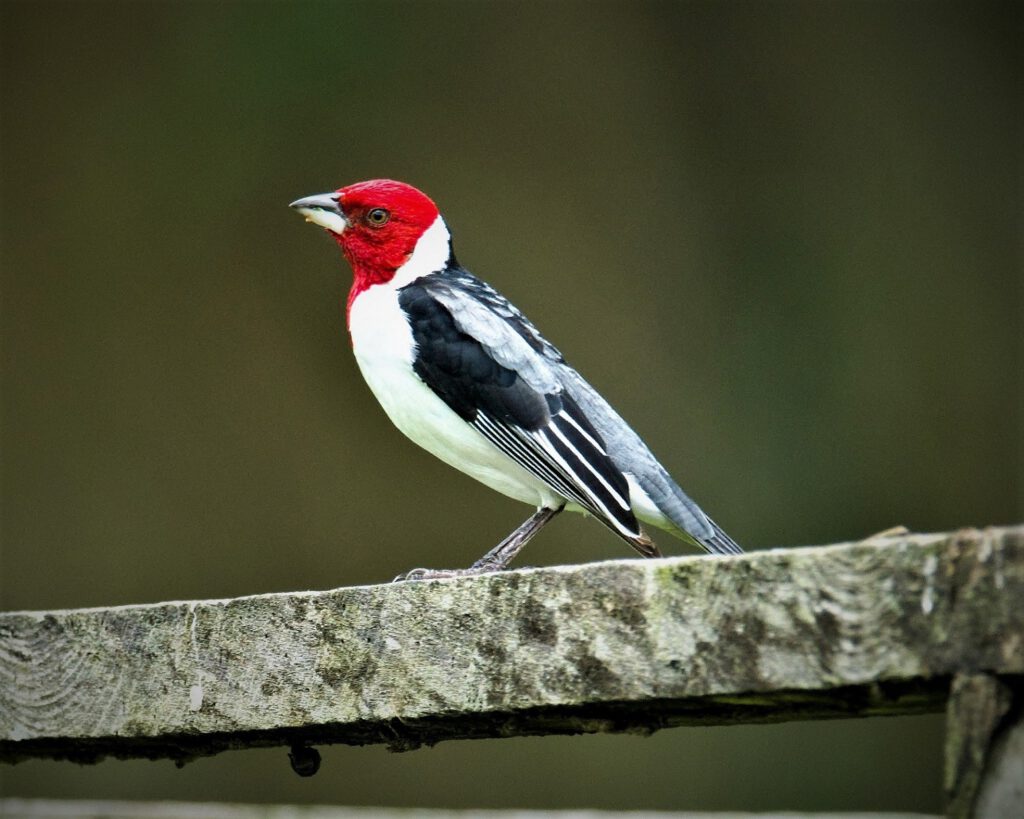
The Dominican Cardinal (Paroaria dominicana) belongs to the finch family and is an endemic species in Brazil. It is predominantly found in the rainforests, where it feeds on fruits and insects it finds in the trees. Its beautiful appearance has made it a commodity, with many of them ending up as caged birds. Illegal trade has made the cardinal bird an endangered species today (Mata Atlantica / State of Bahia, Brazil) (AR 09/2023)
There are several reasons for this remarkable diversity. Firstly, tropical rainforests have existed for a long time, as evidenced by findings of fossilized leaves dating back to about 58 million years ago. The consistent climate also plays a crucial role, providing favorable conditions for the survival and development of a wide range of species. Additionally, the different layers or strata of the forests offer numerous ecological niches where species can specialize. These factors contribute to the exceptional diversity of animal and plant species found in Tropical Rainforests.
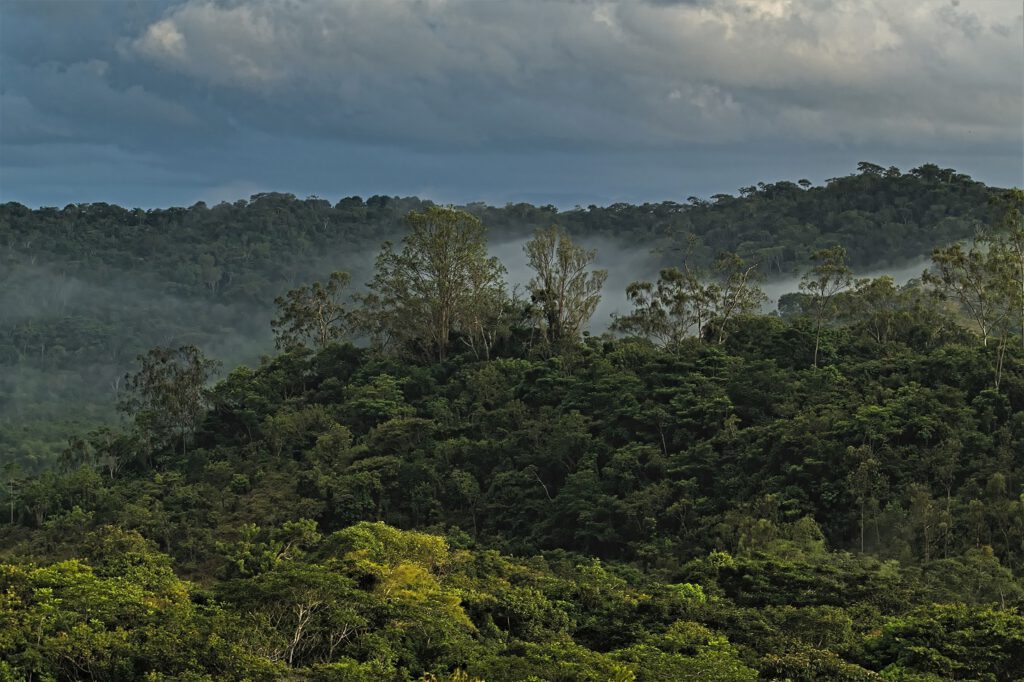
The tropical rainforest Mata Atlantica, State of Bahia, Brazil (AR 09/2023)
According to Wikipedia, 82% of the biomass in Tropical Rainforests comes from plants. These forests exhibit the highest productivity, especially in the constantly moist regions. (Here is a link to the Biomass tutorial).
The Tropical Rainforest plays a crucial role in climate protection and biodiversity.
In the forests of the Amazon, there are more than 16,000 different tree species. These forests can be so dense and tall that it takes up to ten minutes for the rain to reach the forest floor when it starts raining. However, by the year 2023, the impacts of the climate crisis are becoming increasingly evident in the Amazon, and the much-needed rain is becoming less frequent. „Preserving the last large, contiguous rainforests of the Amazon is essential for climate protection,“ says Dr. Konstantin Ochs, Project Manager for South America at WWF Germany. „And the Indigenous Territories of Brazil, with their mostly intact nature, are central to any strategy for combating the climate crisis and protecting biodiversity in Brazil and worldwide.“